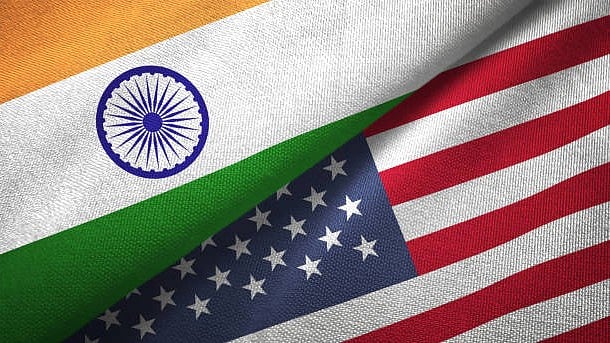
Flags of India and the US. (For representation)
Credit: iStock Photo
On January 15, the United States announced removing three Indian entities: the Indian Rare Earths, the Indira Gandhi Centre for Atomic Research (IGCAR), and the Bhabha Atomic Research Centre (BARC) from the US Entity List. This removes one of the last remaining vestiges of the sanctions imposed on Indian defence, space, and nuclear sectors in the aftermath of 1998 nuclear tests.
The entity list, managed by the US Department of Commerce, restricts exports to foreign entities involved in military or weapons of mass destruction programmes. It requires companies to obtain licenses before exporting to listed entities, and violations can lead to heavy fines and loss of export rights.
India’s research labs and facilities associated with the Department of Space (DoS), the Department of Atomic Energy (DAE), the DRDO, the IITs, and the Ministry of Defence were placed on the entity list following the 1998 nuclear tests. However, many of these sanctions were rolled back within a few years. Most military facilities were removed from the list in 2000, and facilities related to India’s space programme were removed in 2004, 2005, and 2011.
It is no coincidence that co-operation between India and the US in the space domain accelerated only after 2011 because organisations on the entity list found working or collaborating with the US private sector, research organisations, and government departments extremely challenging. NASA and ISRO agreed to develop the NISAR satellite, a flagship India-US space technology co-operation project, in 2014.
Despite the 2008 India-US civil nuclear deal, organisations linked to India's nuclear programme remained on the entity list until recently. As a result, India has developed its own nuclear reactor technology and is constructing 700 MW reactors in fleet mode and plans to more than double its nuclear capacity to 22,000 MW by 2031. However, plans for foreign reactors have faced challenges like nuclear liability law, acquisition issues, local opposition, and rising costs. Efforts to build six French EPRs in Jaitapur, in Maharashtra, and six American AP1000 reactors in Kovvada, in Andhra Pradesh, have stalled for years. Thus, removing entities from the list will unlikely speed up reactor construction in India without addressing these issues. Additionally, Indian entities involved in reactor construction have not been on the entity list since 2002.
However, there is potential for India and the US to collaborate on emerging nuclear technologies rather than reactor construction. Both countries are researching the Small Modular Reactors (SMRs), and mutual collaboration would accelerate India's Bharat Small Reactor (BSR) initiative, enhancing local R&D and innovation. As R&D activities in India in the nuclear domain are mainly State-led, there is scope for increased government-to-government co-operation between research communities in both countries, in applications of nuclear technology such as irradiation technologies, radiochemical sciences, radionuclide applications, nuclear waste reprocessing, the thorium fuel cycle, etc.
Indian companies are already partnering with US firms to improve the fuel cycle, and this collaboration will bolster those efforts. Under the iCET framework, both nations have committed to enhancing co-operation on critical and emerging technologies, including nuclear energy.
While there is potential for civil nuclear technology co-operation between India and the US, the Nuclear Non-Proliferation Treaty (NPT), to which India is not a signatory but the US is, significantly impedes similar co-operation in developing technologies with military use such as reactor miniaturisation or nuclear weapon simulation software. The NPT explicitly prohibits a nuclear-weapon State from assisting a non-member to manufacture or otherwise acquire nuclear weapons. In the unlikely event that both countries decide to co-operate in these dual-use applications, they must get creative to get past the NPT.
Strategic and economic imperatives are likely to dictate the extent of co-operation on research and development between India and the US. Both countries must align their priorities in this sector to extract value from this partnership. Nuclear energy is experiencing a global renaissance, with many countries investing in R&D efforts, expanding their nuclear power capacity, and even introducing nuclear power into their energy mix for the first time. China has invested heavily in advancing the technical know-how for nuclear technologies with significant recent advances in the SMRs, thorium fuel cycle, and molten salt reactor technologies. India must use all available opportunities to bridge this technology gap.
In 2023, India and the US defied many odds to sign an MoU to jointly produce GE Aerospace’s F414 engines in India in partnership with Hindustan Aeronautics Limited (HAL). India and the US should seek to upgrade their partnership to the next level by working on a similarly transformative deal in nuclear technology development.
(Saurabh Todi is a researcher associated with the Takshashila Institution.)
Disclaimer: The views expressed above are the author's own. They do not necessarily reflect the views of DH.